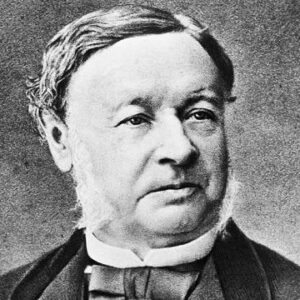Theodor Schwann was a German scientist who discovered the Schwann cells in the peripheral nervous system and made significant contributions to the development of cell theory. In addition, he is credited with coining the word metabolism. He was the son of a jeweller and attended the Jesuits’ College in Cologne before going on to the Universities of Bonn and Würzburg. He began working under the renowned physiologist Johannes Peter Muller after receiving his medical degree from the University of Berlin. Muller, who was working on his key book on physiology at the time, had a big influence on the young man. Schwann assisted his professor in his studies and made important findings on the nerve and muscular structures. Schwann eventually went into academia, accepting a position as professor of anatomy at the Catholic University of Leuven, where he continued his studies. He investigated the subject of spontaneous generation over his career and was one of the first to contribute to the germ theory of alcoholic fermentation. He has made a significant contribution to the understanding and classification of mature animal tissues. He got increasingly interested in theological questions in his senior years.
Childhood and Adolescence
Theodor Schwann, the fourth son of Elisabeth Rottels and her spouse Leonard Schwann, was born on December 7, 1810, in Neuss, near Düsseldorf. His father worked as a jeweler before becoming a printer.
In 1829, he proceeded to the Jesuit College in Cologne, then to Bonn, where he met the physiologist Johannes Peter Muller. He subsequently went on to study medicine at the University of Würzburg before continuing his education at the University of Berlin, where he received his medical degree in 1834. The respiration of the chick embryo was the subject of his doctoral dissertation.
Theodor Schwann’s Career
Theodor Schwann met Muller again in Berlin, and the young man was persuaded to pursue a career in research. Muller was working on a big book on physiology at the time, and Schwann assisted him with his study.
Under the microscope, he worked with animal cells, particularly the neurological and muscular tissues, which he found fascinating. During his research, he discovered the cells that surround nerve fibers, which are now known as Schwann cells in his honor.
He studied animal stomach lining extracts and determined that something other than hydrochloric acid was involved in digesting. In 1836, he succeeded in isolating the active ingredient, which he termed pepsin, after more investigation in the region.
He conducted a series of tests in the 1830s to see if the concept of spontaneous generation was real or incorrect. He used a glass tube to expose sterilized broth to hot air and found that no microorganisms were present. This persuaded him that the concept of spontaneous generation was incorrect.
He discovered the involvement of microorganisms in alcohol fermentation and putrefaction about this time. He postulated that yeast was responsible for the chemical process of fermentation after extensive testing. His explanation of fermentation was not accepted by other scientists until more than a decade later.
In 1838, one of his friends, botanist Matthias Schleiden, published a paper on the structure and genesis of plant cells in which he proposed that all plant cells had the same structure and that new plant cells emerge from the nuclei of old plant cells. Schwann was intrigued by this paper and wondered if the same might be said for animal cells.
He told Schleiden about his views, and the two of them started looking into the parallels between plant and animal cells. Their studies of animal tissues led to the development of the cell theory, which was published in 1839 in Schwann’s book “Microscopic Investigations on the Accordance in the Structure and Growth of Plants and Animals.”
In 1839, Schwann was appointed chair of anatomy at the Belgian Catholic University of Leuven. He was a devoted educator who was well-liked by his students. In 1848, he was appointed professor of anatomy at the University of Liege, where he worked on a human respirator for use in non-breathable conditions.
Theodor’s Major Projects
He discovered Schwann cells, a type of glial cell that keeps myelinated and unmyelinated peripheral nerve fibers alive. Many fundamental features of peripheral nerve biology are influenced by the cells.
The cell theory, which describes the properties of cells, is credited to Schwann and Matthias Schleiden. His hypothesis that animals, like plants, are made up of cells or products of cells in their structures was a great breakthrough in biology because nothing was known about animal structure until the mid-nineteenth century.
Achievements and Awards
His physiological research on the formation of animal and vegetable textures earned him the Copley medal in 1845.
Schwann was elected to both the Royal Society and the French Academy of Science in 1879.
Personal History and Legacy
Theodor Schwann was a simple man who avoided the petty rivalries and scientific debates that plague the scientific community. His students adored him and held him in high regard. He did not marry.
At the age of 71, he died in Cologne, Germany, on January 11, 1882.
Estimated Net worth
Theodor is one of the wealthiest and most well-known biologists. Theodor Schwann’s net worth is estimated to be $1.5 million, according to Wikipedia, Forbes, and Business Insider.


